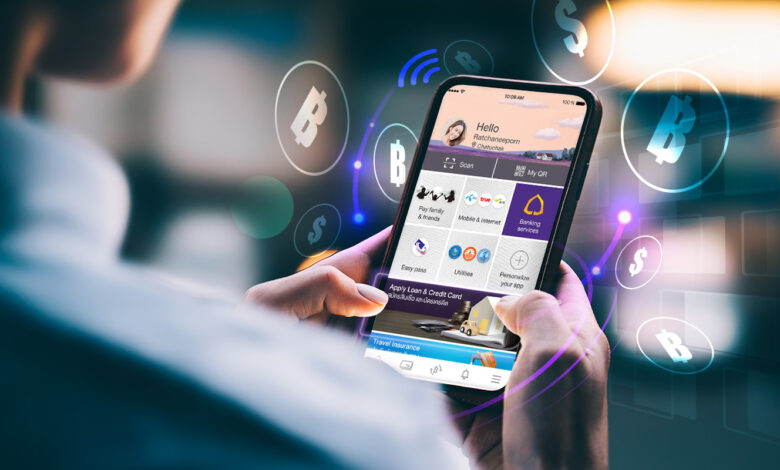Mobile Banking Loan Revolution: Challenges and Impact Financial Services

Introduction
With the appearance and increasing acceptance of mobile loans in the past few years, the financial services market has undergone a transformational upheaval. The financial industry is no exception, as innovation changes numerous businesses.
Mobile banking loans, made possible by smartphone applications and online platforms, have gained popularity, giving customers unparalleled ease and access to financing.
This article goes into the emergence of mobile financing in financial services, investigating the causes influencing their popularity, benefits, obstacles, and implications for lending’s future.
The Digital Revolution and Financial Inclusion
- The Evolution of Lending: Traditional to Digital
Many people and small companies were neglected by the traditional loan process, which was typically characterized by burdensome paperwork, lengthy approval times, and rigorous qualifying standards.
With the explosion of technology, financial institutions understood the need to adapt and respond to consumers’ changing requirements. This resulted in the creation of mobile loans, which used the pervasiveness of cell phones to ease and accelerate the borrowing process.
- Promoting Financial Inclusion
The importance of mobile loans in fostering financial inclusion is one of the primary factors driving their emergence. A sizable share of the world’s population is still unbanked or underbanked in various regions.
Mobile loans fill this void by providing a streamlined application procedure, fewer paperwork standards, and faster approval periods. This inclusivity empowers individuals who were previously excluded from traditional lending channels to access credit when needed.
Advantages of Mobile Loans
- Unparalleled Convenience
The hallmark of mobile loans is the convenience they offer. With a few taps on a smartphone screen, users can submit loan applications, receive instant approvals, and Pay/Send money directly to their bank accounts.
This speed and simplicity have revolutionized the borrowing experience, allowing users to secure funds for emergencies or planned expenses without the hassle of visiting a physical bank branch.
- Accessibility and Speed
Mobile loans capitalize on the widespread ownership of smartphones, making credit accessible to a broader demographic.
This accessibility is further amplified by the swift approval processes enabled by automated algorithms that assess creditworthiness based on various data points. Unlike traditional loans, which might take days or weeks to process, mobile topup loans often provide funds within hours, if not minutes.
- Personalized Borrowing Experience
Data-driven algorithms empower mobile loan providers to tailor their offerings to individual borrowers. These algorithms can determine suitable loan amounts and repayment terms by analyzing user behavior, financial history, and spending patterns.
This personalized approach enhances the user experience, ensuring borrowers receive loans aligning with their financial circumstances.
Challenges and Considerations
- Interest Rates and Transparency
While the convenience of mobile loans is undeniable, it’s essential to scrutinize the interest rates associated with these loans. Some mobile loan platforms may charge higher interest rates compared to traditional lenders. Rates call for borrowers to review the terms and conditions carefully, ensuring full transparency before committing to a loan.
- Debt Traps and Responsible Borrowing
The ease of obtaining mobile loans also raises concerns about borrowers falling into debt traps. The simplicity of the process, coupled with instant approvals, might lead individuals to borrow impulsively without considering their ability to repay.
Educating users about responsible borrowing practices and emphasizing the importance of evaluating their repayment capacity is crucial.
The Future of Lending: What Lies Ahead
- Continued Technological Innovation
There would be country based integration of AI into Mobile loan services. For instance taking Kenya into consideration to get more efficient Savings Kenya Mobile loan providers will likely integrate more advanced tools, such as artificial intelligence.
These innovations will further refine credit assessment processes, making lending even more accurate for people in Kenya. Similar processes will be followed in different countries having different mobile loan providers.
- Collaboration with Traditional Institutions
The rise of mobile loans doesn’t necessarily signify the end of traditional lending. In fact, collaboration between traditional financial institutions and mobile loan platforms could lead to hybrid models that offer the best of both worlds: the personalized experience of mobile lending and the stability of traditional banking.
Conclusion
The rise of mobile loans in financial services marks a significant shift toward a more accessible, convenient, and inclusive borrowing landscape. Enabled by smartphones and advanced algorithms, these loans have addressed many of the shortcomings of traditional lending, providing individuals and businesses with quick access to credit.
As the market evolves, borrowers must be educated, practice responsible borrowing, and take advantage of every personal loan while being aware of their possible drawbacks. With sustained innovation and cooperation, the future of loans will be more adaptable and user-centered than ever before.






